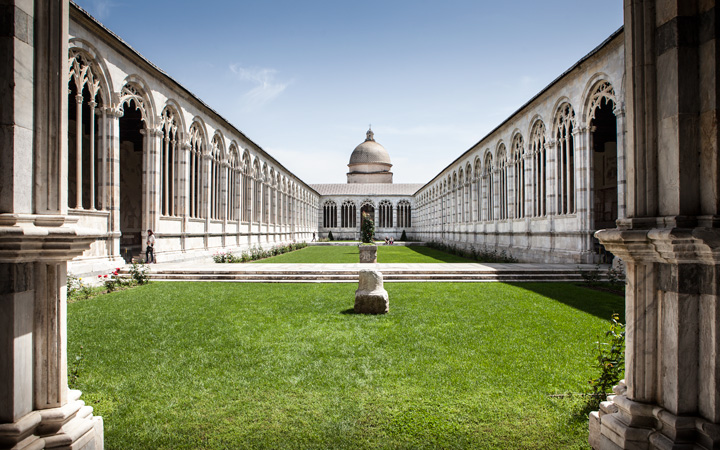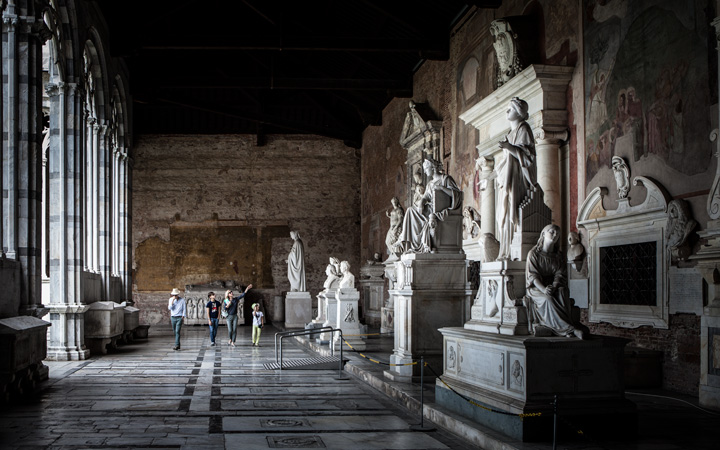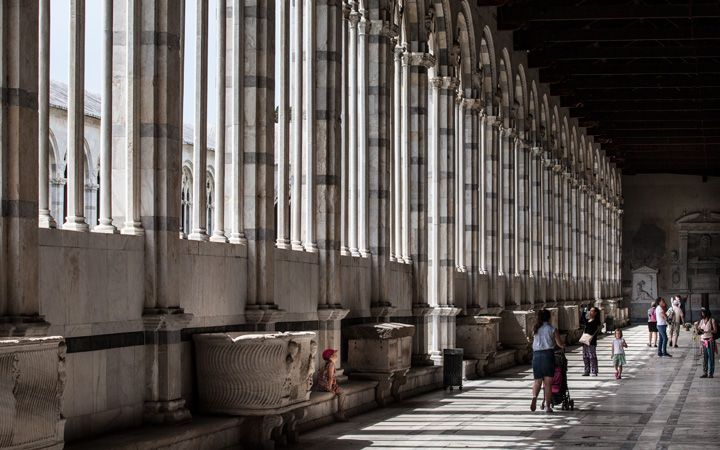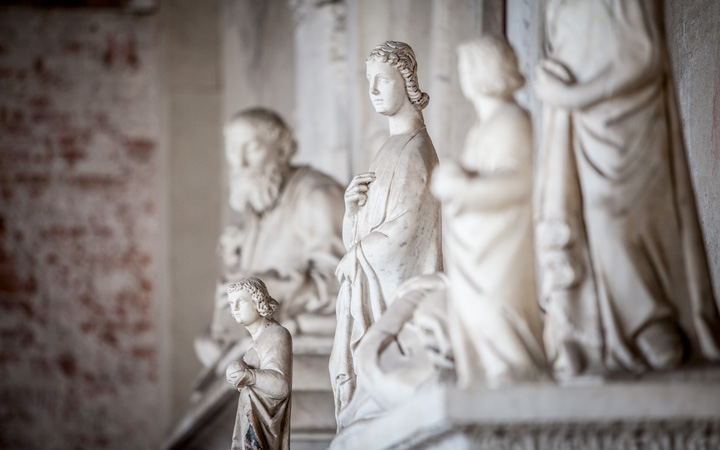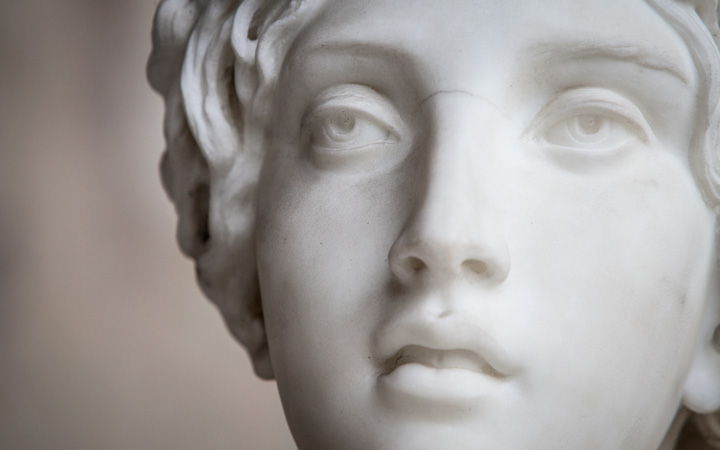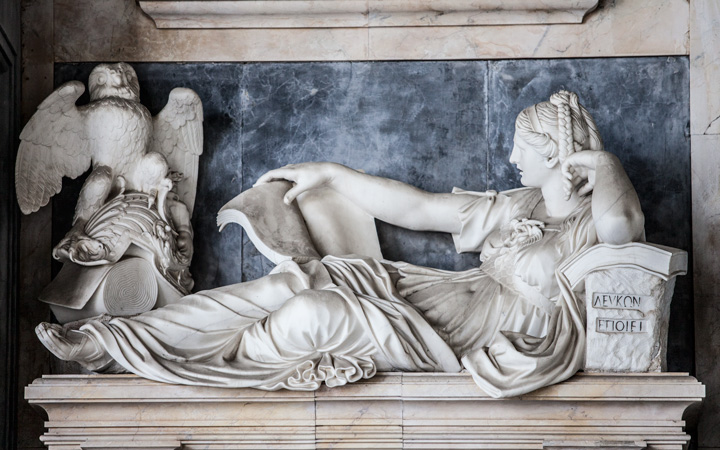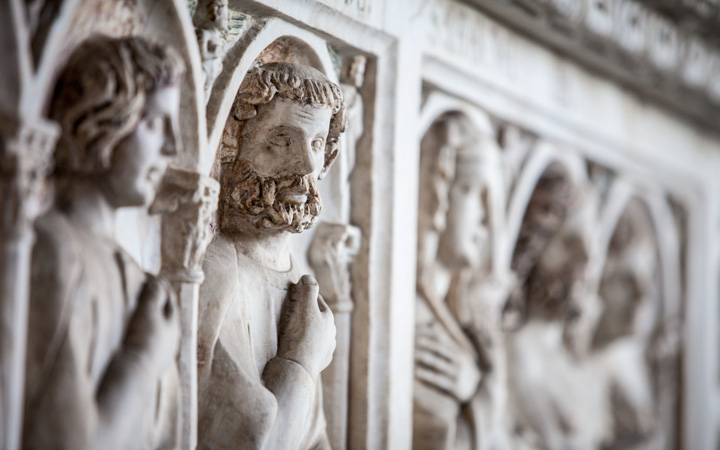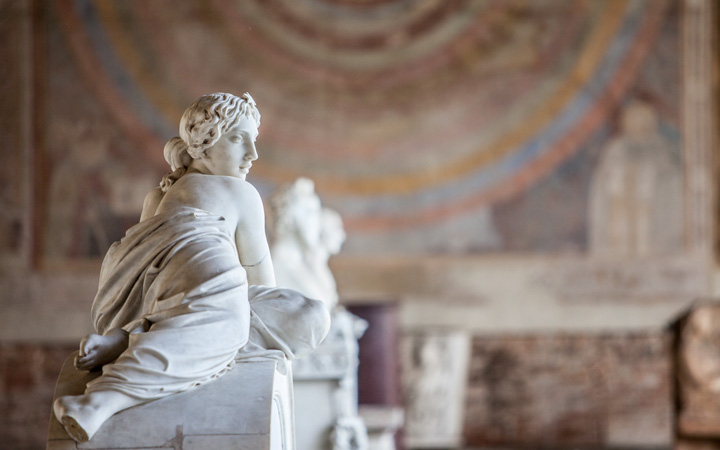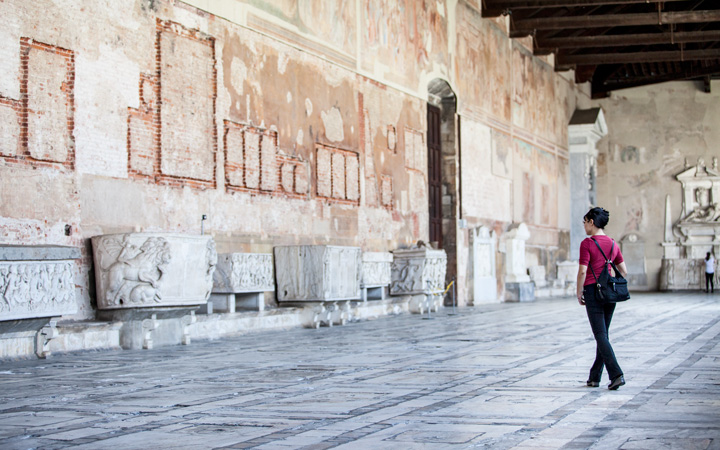Camposanto
The Camposanto is the last monument on Piazza del Duomo, its long marble wall flanking the northern boundary and completing its shape. It was founded in 1277 to accommodate the graves that until then were scattered all around the Cathedral. Archbishop Federico Visconti wanted the building to be a “large and dignified, secluded and enclosed place”. This is how one of the oldest Christian Medieval architectures for the devotion of the dead came into being.
THE FRESCOES
During the fourteenth century, as the construction took shape, the inner walls were embellished by wonderful frescoes about Life and Death, created by the two great artists of the time, Francesco Traini and Bonamico Buffalmacco, who seem to stage the sermons declaimed in town by the Dominican Cavalca or the frightening views of Dante’s Comedy; reference to it is most evident in the “Triumph of Death” and in the “Last Judgement” painted by Buffalmacco, who is also known as the character of some of Boccaccio’s stories. The cycle of frescoes goes on well into the fourteenth century with the “Stories of Pisan Saints” by Andrea Bonaiuti, Antonio Veneziano and Spinello Aretino and the Stories of the Ancient Testament, started by Taddeo Gaddi and Piero di Puccio and finished in the mid-15th century by the Florentine Benozzo Gozzoli, along the northern wall.
‘THE TRIUMPH OF DEATH’
On June 6, 2018 the most important and best kept fresco has been relocated in its original placement after a long history of restoration.
SEPULCHRAL MONUMENTS
Since the sixteenth century, the Camposanto has sheltered the sepulchers of the most prestigious lecturers of the local University and the members of the Medici family, who ruled over the city at that time and are also hinted at by the characters of the Biblical scenes frescoed on the shorter walls. The monument was to become the Pantheon of local memories: not only of the local people or families but also of the glorious classical and Medieval past of the city.
THE ARCHAELOGICAL COLLECTION
The building began to be used as a museum, its walls engraved with Roman epigraphs and the sarcophagi relocated to the corridors, acting now as valuables documents of history and art. The use of the building as a museum established itself in the early nineteenth century when the monument became one of Europe’s first public museums. In the years in which Napoleon decreed that many works of art should be taken away from the churches and taken to France, Carlo Lasinio, appointed Curator of the Camposanto by Maria Luisa, Queen of Etruria, collected amidst its frescoed walls the sculptures and paintings that were in the suppressed churches and convents of the city. Other works came from the Cathedral and the Baptistery, along with remains from the local archaeological sites and the antiques markets. In the meantime, commemorative and funerary monuments dedicated to the city notables continued to be built in the corridors that were renamed galleries.

